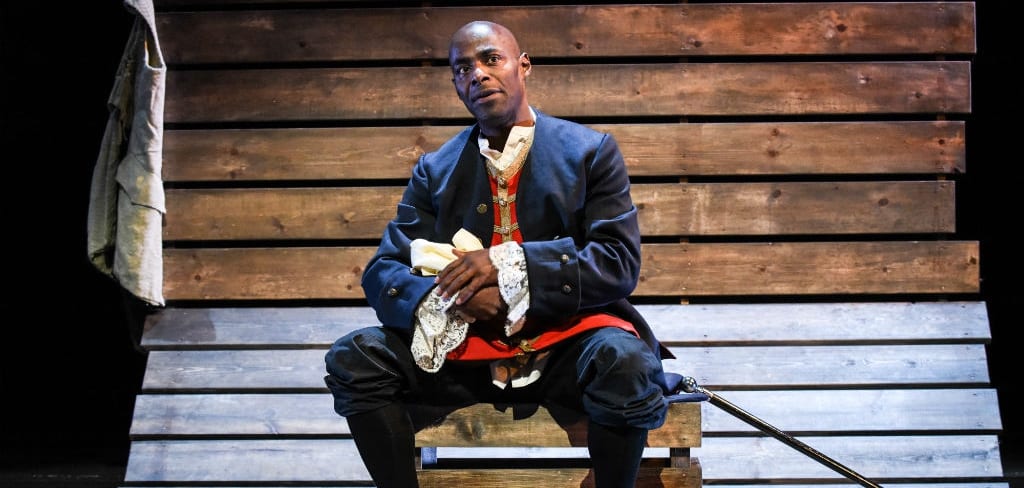Sancho: An Act of Remembrance starts in the lobby on the third floor of the National Black Theatre in Harlem. You step out of the elevator and are directed towards a stack of voter information and registration forms, and then you begin to take in the walls around you – an exhibit dedicated to the historic and ongoing struggle of black voters in America.
And then you are let into the theater. There, you meet Paterson Joseph. His ebullience is infectious, and so is his passion – so much so that his introduction to the show that he wrote is less of an introduction and more of an extension of the play itself. The reason for the show’s existence, he tells us: “I wrote this play because I wanted to be in a costume drama,” he quips. And he takes us briefly on a journey of searching for black Britons in history before finding a portrait of Charles Ignatius Sancho, a black man who had the honor of being painted by Thomas Gainsborough in 1768. So was born Joseph’s one-man show: an homage to the remarkable man behind the portrait, whom Joseph dubs “the forerunner of all strugglers.”
Sancho: An Act of Remembrance is the story of Sancho’s life, as told to us by the man himself. To sum up Charles Ignatius Sancho in the terms of a history textbook is to state that he was the first black man in the United Kingdom to cast a vote. This in itself is an achievement worthy of immortalization. But there is so much more to know: the tutelage of a duke, or the friendship of prominent London contemporaries (including David Garrick, the famous Shakespearean actor), or the owning of his own business. Sancho arrived in London at the age of three as the human pet of aristocratic sisters – a horribly common fate for young African children in England. But through a combination of cleverness and extraordinary fortune, Sancho escaped slavery and became a free and independent, if not notorious, man in London society – eventually earning the right to vote as a property owner.
But even without the enrichment of its political and historical significance, Sancho: An Act of Remembrance is a joy to experience. Paterson Joseph’s Sancho, who delights in breaking the fourth wall, is overflowing with charisma, and sometimes it’s hard to tell if it’s Joseph or Sancho who has the audience wrapped around one finger. Joseph writes and plays him with such vivacity that you will find yourself wishing you could take Sancho out for a drink. (He would probably be a lot of fun.) The Gainsborough painting, which features throughout the play, shows a man who is “self-aware” and “self-possessed.” And Joseph’s portrayal of Sancho is so much more – he is witty and fiercely intelligent; he is vainglorious at times, and yet affectionately self-deprecating; he is flamboyant and sometimes silly, and yet acutely attuned to the gravity that comes with a traumatic past and the constant pressure of being forced to represent an entire race.
Sancho: An Act of Remembrance is wonderfully written and masterfully acted. It’s a reminder of the power of theater to teach us of the incredible people who came before us, left out of our textbooks, but still with stories that make us laugh and cry. It’s a show that you just won’t want to miss.

